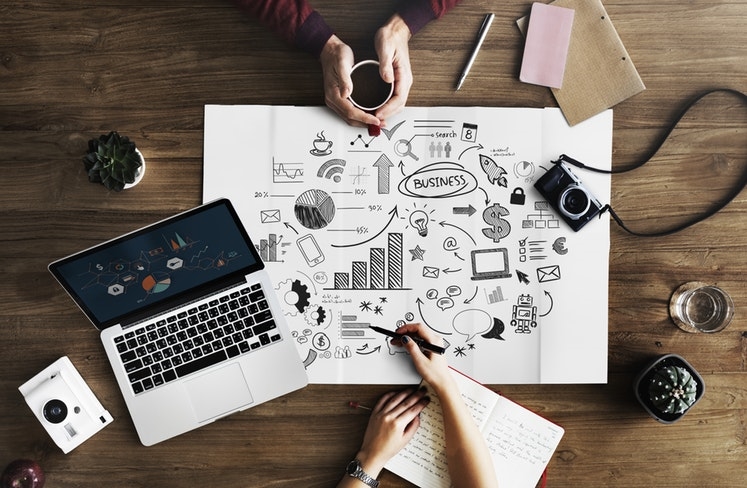IoT and Commerce: How New Technology is Shaping the Way We Shop
IoT and Commerce: How New Technology is Shaping the Way We Shop

If we were able to fast-forward ten years into the future and look at the state of ecommerce and retail, we probably wouldn’t recognize what it’s become. The Internet of Things (IoT) is in the process of fundamentally revolutionizing how consumers shop and big changes are coming down the innovation pipeline.
The IoT-Ecommerce Collision Course
Before you can understand how IoT is impacting ecommerce, you have to grasp the true weight and magnitude of the IoT and what’s happening on a broad scale.
IoT technology is expanding at an astonishing rate. Industrial products are being impacted the most, with 45 percent of businesses in this sector using IoT products (and another 22 percent expected to adopt IoT within the year). But perhaps most exciting is the influence IoT is having on connected devices.
According to Cisco’s annual Visual Networking Index, machine-to-machine connections supporting IoT applications will account for more than half of the world’s 28.5 billion connected devices by 2022. This will cause reverberations in numerous industries and niches, including ecommerce.
Retail ecommerce has been enjoying a steep and healthy growth curve over the past decade. According to Statista, worldwide ecommerce sales were right around $1.34 trillion in 2014, $2.84 trillion in 2018, and are anticipated to scale to $3.45 trillion this year. By 2021, it’s projected that global ecommerce sales will inch up near the $5 trillion mark.
As both the IoT and ecommerce industries undergo significant growth, we’re beginning to see how these massive forces can work together for good. There’s so much potential, and it’s nearly impossible to understand how transformational the IoT will be for ecommerce, and vice versa.
8 Trends to Keep an Eye On
Whether you’re in the tech space or retail industry, it’s helpful to understand what’s happening at the convergence of the IoT and ecommerce. Here are a few powerful ways the former is impacting the latter:
1. More Educated Consumers
Gone are the days where customers had limited options to choose from and were cornered into buying a particular product from a particular brand without much wiggle room or leverage. We’re operating in an entirely new retail landscape with an overwhelming number of options. And as consumers become more educated, they also become increasingly aware of their options.
As more data is collected and more information is made available to consumers, the average shopper is becoming increasingly empowered to make smarter purchase decisions. For example, a website like Top10.com gives individual customers the ability to compare and choose the right options with more accuracy than ever before. They can see the numbers, study the metrics that matter, and end up making more informed choices.
Educated shoppers have also been known to demand more brand transparency from retailers. They want to know how products are sourced, where they’re made, and what’s going into the various production processes. As a result, brands are being forced to open up and be more honest about their practices. This is considered a net win for everyone.
2. Better Cyber Security
It’s easy to see that the rise of connected devices has led to an increase in cybercriminal activity. Each device represents an access point – and many are left unprotected and vulnerable to experienced hackers.
As things currently stand, the IoT gets a failing grade. According to a survey from strategy consulting firm Altman Vilandrie & Company, half of all American companies using IoT have been breached – including those within the retail sector.
But the IoT hasn’t been all bad news for cybersecurity. In fact, it may actually end up improving how ecommerce companies are able to protect themselves against digital threats.
One important development to keep an eye on is blockchain. With so many different IoT devices handling and exchanging communications, decentralized blockchain technologies could end up enhancing security by providing safer networks. It’ll take some time for this market to mature – and blockchain alone isn’t enough – but any additional security layers that businesses can use will offer up a distinct advantage.
3. Personalized Shopping Experiences
Shopping isn’t just about buying a product or service. In most cases, there’s an experiential element involved. Consumers want to enjoy the process of shopping and they feel more satisfied with their purchases if they can equate them with positive experiences.
Whether in-store or online, the IoT is positively impacting how consumers shop. IoT-enabled retail systems and ecommerce platforms collect and analyze robust data sets that can be used to present localized offers, make product recommendations, and personalize the checkout experience to reduce friction and promote efficiency.
Personalized discounts will become a huge trend in the coming months. As businesses gather data on individual customers, they’ll be able to reward them for their loyalty and increase the chances of repeat purchases by sending personalized coupons when customers are in the store or on the site. In light of this, general discounts will become less commonplace.
4. Automated Checkout
For the better part of the 21st century, self-checkout has been a staple in supermarkets and large retailers like Walmart, Target, and Home Depot. It allows retailers to cut back redundancies, eliminate the need for lots of cashiers, and better handle the irregular fluctuations that occur throughout the day.
But recently, the label of “automated checkout” has taken on a different meaning. In January 2018, Amazon launched the first ever checkout-free grocery store where customers can walk in, put items in their cart, and walk out without needing to checkout. The in-store technology tracks which items are put into the cart and then bills the customer via a connected credit card after they leave the store. And while it’s certainly had its flaws and needs to be tweaked, other companies are keeping an eye on this technology.
Believe it or not, automated checkout is poised to become commonplace in the physical retail space. It’ll help lower costs and close the growing gap between brick and mortar and ecommerce retail.
According to estimates from McKinsey, automated checkout can reduce cashier staff requirements by up to 75 percent. This could result in savings of $150 billion to $380 billion by 2025.
5. Smart Shelves
Speaking of automated checkout, physical retailers and brick and mortar stores will become more aware of smart shelving technology in the coming months.
Smart shelves are fitted with RFID tags that act as weight sensors and readers. They can sense products and detect when items are removed from shelves and placed in a shopping cart or basket. Not only does this allow for swift and cost-effective shopping experiences, but it can also cut down on in-store theft, enhance inventory strategies, and help businesses track what’s happening in their stores.
Smart shelves also serve as retail data engines. They provide retailers with an extensive range of data that’s traditionally been unavailable to brands. And with AI predictive optimization, some of the best smart shelves are even able to predict peak times and encourage proper restocking.
6. Beacons
Beacon technology is closely related to automated checkout, smart shelves, and personalized shopping. First brought into the marketplace by Apple in 2013, beacons are tiny Bluetooth devices that send notifications and alerts to smartphones based on location proximity.
In a retail setting, beacons can be used to identify when certain shoppers are nearby – either in the store or down the street – and send notifications about events or sales. Beacons also provide insightful data on store traffic, customer loyalty, and other important elements.
7. Demand-Aware Warehousing Scales Up
Being able to track inventory in the store and on an ecommerce website is only helpful if there’s a backend solution to provide optimized inventory levels. Thankfully, the IoT is having an impact in this area, as well.
Demand-aware warehouse fulfillment is the next big thing. This warehousing strategy uses automation and robotics to monitor inventory levels and real-time sales opportunities. Based on the data, it can send inventory, hold inventory, and send better-organized shipments (making it easier to unload and stock shelves at the receiving end).
8. Improvements in Maintenance and Warranties
When selling technical or complicated products, maintenance and warranties are always major concerns. If a retailer isn’t careful, they can end up with huge costs and lots of wasted time on customer service and repairs.
The IoT is a helpful assistant in this fight. General Electric is a perfect example of this. They actually gather data from the products and devices they sell. In doing so, they can remotely perform advanced diagnostics, remind customers about upcoming scheduled maintenance, and walk customers through basic repairs without ever touching the product.
As a result of easier and more cost-effective maintenance, some companies will be able to dramatically improve their warranties and offer unique selling points that their competitors are unable to tap into. It’s an especially valuable opportunity for businesses in highly technical industries.
The Future is Here
There’s no way to know exactly how technology will innovate in the coming years, but this we know: The IoT will have a significant impact on ecommerce and retail. Companies and industry partners that recognize these opportunities will be able to benefit from the growth.
It’s time to stop talking about the future and start focusing on the here and now. Because as much as we may wonder what’s coming down the innovation pipeline, the reality is that we’re currently living in the future that many have been predicting for years. By focusing on the IoT and leveraging the latest trends, businesses of all shapes and sizes will find incredible opportunity.
The post IoT and Commerce: How New Technology is Shaping the Way We Shop appeared first on ReadWrite.
(26)


